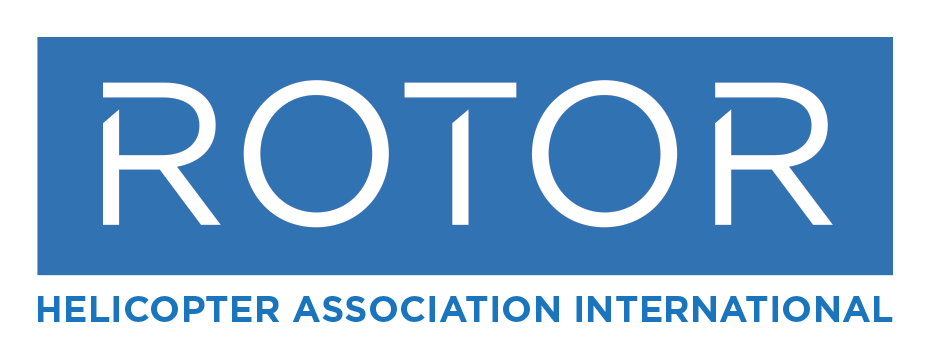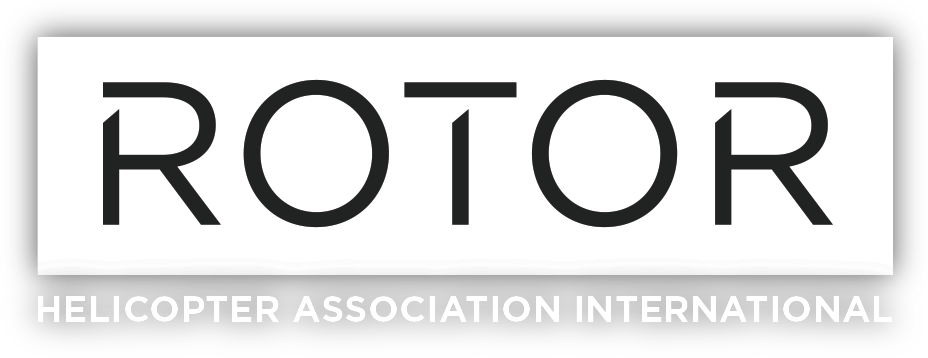2024 Nominations Will Open Soon!
Please do not submit nominations until this site states the nomination period is open.
Celebrating the highest standards of professionalism in helicopter aviation
Within vertical aviation, there are pilots, mechanics/engineers, safety professionals, and others who go above and beyond to pursue professional excellence. Their dedication is an inspiration to us all. The HAI Salute to Excellence Awards recognize outstanding achievement in all forms of vertical aviation, including unmanned aircraft systems (UASs, or drones).
Help us recognize excellence in the vertical lift industry. Our policy is that any person can nominate someone for an award.
HAI will accept nominations for all awards listed. At the discretion of the selection committee, not all awards may be presented each year. The selection committee may choose to move a nomination from one category to another if they believe it may be an more appropriate fit.
Please see the “How to Submit a Nomination” tab below for information on submitting your nomination.
- Award Categories
- Award Timeline
- Click Here to Submit a Nomination
- Tips for Submitting a Winning Nomination
The ten Salute to Excellence Award categories honor those pilots, maintenance technicians, operators, safety professionals, and others who have demonstrated a commitment to excellence that has enriched our industry.
The Golden Hour Award recognizes the efforts of an individual, group, or organization that, through a particular activity or contributions over time, has advanced the use of helicopters or UAS aircraft in the vital mission of air medical transport.
The Pilot of the Year Award recognizes an outstanding single feat performed by a helicopter or UAS aircraft pilot during the year or extraordinary professionalism over a period of time. Nominees must be active helicopter pilots.
The Lifetime Achievement Award salutes excellence in management and leadership. The award is granted to an individual for long and significant service to the international helicopter or UAS aircraft community. Nominees need not be licensed pilots.
The Safety Award acknowledges outstanding contributions in the promotion of safety and safety awareness throughout the international helicopter or UAS aircraft community.
The Communications Award is given to the individual or organization in aviation media, achieving the most creative and distinct dissemination of information about the helicopter or UAS aircraft industry.
The Law Enforcement Award recognizes an individual or organization that has contributed to the promotion and advancement of helicopters or UAS aircraft in support of law enforcement activities. Nominees are not limited to pilots or law enforcement personnel.
The Maintenance Award recognizes an individual for longstanding excellence in helicopter or UAS aircraft maintenance, maintenance instruction or supervision, or a single significant contribution to helicopter maintenance. This award was previously known as the Excellence in Helicopter Maintenance Award.
The Humanitarian Service Award is presented to the person(s) who best demonstrate(s) the value of helicopters or UAS aircraft to the communities in which they operate by providing aid to those in need. The award may be for a particular mission or for outstanding service over a period of time.
The W.A. “Dub” Blessing Flight Instructor of the Year Award recognizes superlative contributions by a helicopter or UAS aircraft flight instructor in upholding high standards of professionalism.
The Matthew S. Zuccaro Land & LIVE Award recognizes superior decision making, professionalism, and coordinated actions that significantly reduced the likelihood, severity, or consequences of a helicopter accident. At the sole discretion of the judges, this award may be presented to three recipients each year: one for pilots, one for flight crews, and one for maintenance personnel.
| June 8 to October 1, 2023 | Nominations accepted |
| October 1, 2023 | Deadline for submitting nominations (no extensions) |
| October 2023 | Nominations reviewed by selection panel |
| November 2023 | Winners and nominees notified of awards status |
| January 2024 | Salute to Excellence Awards winners announced by HAI |
| February 26 – 29, 2024 | Recognition for Salute to Excellence Awards recipients at HAI HELI-EXPO in Atlanta, Georgia |
Nominations for the 2024 Salute to Excellence Awards program are open from now until Saturday, October 1, 2023.
Please use use this form to create your nomination.
Please note the nominee acknowledgement form is also required (see note below).
Tell Us Why and Show Us! We cannot stress this enough: we know that your nominee is a great person and very deserving of the award, but you need to demonstrate to the selection committee WHY they should honor your nominee. What did your nominee do that made them stand out among many others in our industry? Please give specific, concise information that supports the nomination.
Be sure to supply supporting documentation, such as awards, letters of recommendation, training certifications, photographs, and newspaper and magazine articles that relate to the nomination. Supporting materials should be uploaded at the same time you submit the nomination. You may need to submit particularly large files using alternative forms of entry. Please contact Dan Sweet, director of public relations and communications for HAI, at dan.sweet@rotor.org or 503-970-4449 if you require assistance.
IMPORTANT: HAI requires that all nominees complete an acknowledgment form confirming their knowledge of the nomination. Signed acknowledgment forms must accompany all applications for the nomination to be forwarded for judging.
After their selection, winners should be prepared to provide further biographical material, photographs, and film or video to help in preparing videos highlighting their achievement. The videos will be presented during HAI HELI-EXPO 2024 in Anaheim, and on social media.
For further questions regarding the awards and the nominations process, please contact Dan Sweet, HAI director of public relations & communications, at 503-970-4449 or dan.sweet@rotor.org.
Again, we know your nominee is a great person and that they do a great job. So tell us their story! Tell us why they stand out from so many other great people who also do a great job! As you describe their achievements, be descriptive in how you express their passion for their job and for the helicopter industry. Imagine how your words might sound throughout a darkened banquet room, with a spotlight shining on your nominee.
Start early. It takes time to prepare a professional nomination packet that makes the case for your nominee. Don’t wait until the last minute to begin collecting supporting materials. Include materials that document your nominee’s achievement: letters of recommendation, awards, training certifications, photographs, and newspaper or magazine articles. You cannot supply too much supporting material in a nomination package.
Did your nominee change the industry for the better, improve your business or a process, or have a steller career? Demonstrate how your nominee has gone above and beyond. Include specific ways your nominee went beyond the normal responsibilities of the job in pursuit of the highest standards of professional excellence. Consider each award category carefully; make sure you are submitting your nominee for the award category that most suits his/her/their contributions to the industry.
If you recognize excellence, other probably do too. Original letters of recommendation from one or more additional sources can help to illustrate and emphasize the contribution your nominee made on the industry. Copies of the same letter of recommendation don’t hurt, but personalized letters of support truly stand out.
Create a personal snapshot for the judges. Make your nominee stand out as unique, special, and appealing while still conveying professionalism. Include enough personal information so that your nominee’s personality, work ethic, integrity, or other positive traits are evident to the judges.
Be detailed but concise. Present your nomination in easy-to-read bulleted lists or brief paragraphs. Provide details and facts about what your nominee has done, why it was important, and how it impacted pilots, aircraft, airports, flight schools, or the general aviation community at large. Include dates of accomplishments and any quantifiable results.
Use your nominee as a resource. Interview your nominee and take notes for details or experiences to include in the nomination. The judges need specific, detailed information that will make your application authentic and complete.
Submit early. Give our verifiers the time they need to review your application. If they find a component missing, you may be contacted to submit additional documentation prior to the submission deadline.
Renominate if your candidate doesn’t win. If your nominee doesn’t win this year, try again next year. Revise your nomination to include recent, specific examples, and resubmit it. There is no limit on how many times you can nominate individuals or organizations from year to year. Please note, however, that you should only nominate your candidate in one category per year.
Have your nominee complete the Acknowledgment Form. HAI requires that all nominees complete an acknowledgment form confirming their knowledge of the nomination and affirming that, if selected, they will receive the award in person as a VIP guest of HAI at HAI HELI-EXPO in Anaheim in February 2024. For the nomination to be accepted and forwarded for judging, signed acknowledgment forms must accompany all applications.
2023 Salute to Excellence Winners
Communications Award
For creative distinction in disseminating information about the rotorcraft industry
Sponsored by ROTOR Media
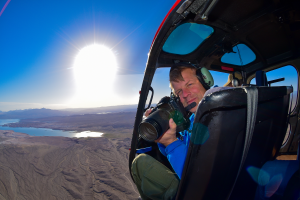
Lawrence “Skip” Robinson
Lawrence “Skip” Robinson
Photographer and Writer, Vertical Magazine, Los Angeles, California, USA
Lawrence “Skip” Robinson was a fixture in the
helicopter industry, known for his fabulous photography, infectious passion for helicopters, and ability to capture jaw-dropping shots.
Robinson, who died unexpectedly in March 2022 of natural causes at the age of 56, loved helicopters from very early on, studying them and their missions and amassing an impressive collection of helicopter memorabilia. Having photographed rotorcraft since his teens, he spent countless hours chasing them with his camera. In 2005, he submitted one of those photos, of a Los Angeles (California) Fire Department Bell 412 working a fire, to Vertical magazine. It was published, forming a partnership with the magazine that continued for the next 17 years.
With his first published image in hand, Robinson took his passion door-to-door. He had a particular interest in parapublic and military operations—not the easiest operators with which to secure permission to fly and photograph. Yet his tenacity, credentials, and charm opened doors. Robinson shared his published Vertical photo with other public agencies and offered to shoot their aircraft for publication as well.
Vertical Publisher Mike Reyno says the phone never stopped ringing after the day that first photo was published. Robinson often called several times a day himself with story tips, and he was willing to go anywhere to produce breathtaking images of helicopters. It wasn’t long before he was writing stories to accompany his photographs, taking readers on adventures and further capturing their imaginations.
“Everyone has a calling in life, and Skip’s calling was as a photojournalist in the helicopter industry,” Reyno says. “At HELI-EXPO®, many people would tell us how Skip’s photos or stories inspired them to enter the industry. They all wanted to thank Skip.”
One photo shoot led to another as more and more public agencies saw Robinson’s work and agreed to a magazine photo shoot of their own. Word was out about Robinson’s skill, and it wasn’t long before his clientele went well beyond Vertical. Law enforcement agencies, air ambulance providers, flight schools, helicopter operators, and even manufacturers started calling him to photograph their helicopters and operations.
When not spending time with or shooting helicopters, Robinson loved to share his passion with others. He was like an uncle to a neighbor’s children, even taking one of them on photo shoots that eventually inspired the child to pursue flight training. Robinson was also an avid volunteer at the Classic Rotors museum in Ramona, California, helping the facility build its model collection.
From the local Los Angeles helicopter community to operators on the other side of the globe, people in the helicopter industry know about Robinson, either through their own contact with him or through his beautiful photography. With his words and through his camera lens, he brought readers with him on countless visits with operators in the field. His photos have appeared in almost every issue of Vertical and Valor magazines and graced nearly 40 of the publications’ covers.
Robinson’s passing leaves a hole not only in the hearts of his friends and family, but also throughout his beloved industry.
W.A. “Dub” Blessing Flight Instructor of the Year Award
For upholding high standards of excellence in flight instruction
Sponsored by Hill Aviation Corporation
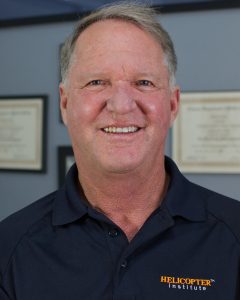
Karl Cotton
Karl Cotton
Senior Flight Instructor, Helicopter Institute, Fort Worth, Texas, USA
Karl Cotton has a simple philosophy: if a student isn’t successful, it’s a reflection on the instructor.
“There’s usually a way to get through to somebody if they’re struggling,” Cotton explains. “I’m a really big believer in bringing kind of a stoke to flight training. There’s nothing about training that should cause the students to suffer. It should be challenging but should be an overall pleasant experience. That’s really what I try to bring out, a challenging but fun experience.”
Cotton’s journey to flight instructor and mentor for countless students started on the ski slopes of Utah. He began heli-skiing in the late 1970s, quicky became hooked on helicopters, and soon started learning to fly.
Cotton began instructing as soon as he received his flight instructor rating and, a little over 700 hours later, landed his first turbine helicopter job as a tour pilot at Grand Canyon Helicopters. From there, he took a utility flying job performing seismic exploration throughout the Rocky Mountains during the 1980s oil boom before landing at the Arizona Department of Public Safety as an officer pilot and flight instructor.
Cotton’s law enforcement experience in Arizona opened the door for a position with the Los Angeles County (California) Fire Department, where he taught various flight techniques, from swift and blue water rescue to aerial firefighting, high-rise fire rescue, and hoist training.
Since then, Cotton has worked as a short-haul pilot for three US national parks and has served as a chief instructor at flight schools, including Leading Edge Aviation in Bend, Oregon, where he runs the night-vision goggles (NVG) program. He also holds a designated pilot examiner certification and has administered more than 1,000 pilot exams.
Today, Cotton is the senior instructor at Helicopter Institute, an OEM-level training facility that offers initial and advanced instruction in Bell aircraft to customers around the country. Cotton serves as the field pilot, traveling to customers and providing customized training in their aircraft. With his vast and varied background in mountain flying, law enforcement, NVG, fire and rescue, instrument instruction, and more, he provides just about any kind of training a customer needs.
Yet, while his impressive breadth of skills and experience speaks volumes, it’s how Cotton approaches his work that really stands out to his customers. He’s easygoing and puts his students at ease, even earning the impressive accolade of making checkrides fun.
“Karl comes to the table with thousands of hours having flown many different profiles and missions,” says Deputy Josh Sweeney of Washington state’s King County Sheriff’s Office. “He’s a great communicator and makes sure to constantly pass on his knowledge and experience to those he’s instructing. What’s even more amazing, Karl is never satisfied with the knowledge he’s gained and always shows up with new and refined techniques to accomplish a task. Karl has inspired me to be a better pilot and a better instructor.”
Golden Hour Award
For distinguished and outstanding service utilizing helicopters in air medical transport
Sponsored by ROTOR Media
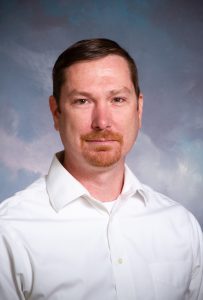
David Ellis
David Ellis
Executive Director, Haiti Air Ambulance, Port-au-Prince, Haiti
When charity air medical transport service Haiti Air Ambulance (HAA) was founded in 2014 as Haiti’s only helicopter air ambulance provider, David Ellis was one of the first flight paramedics to volunteer. Volunteering for 10 to 14 days at a time, he supported the HAA team’s tireless work with various hospitals and medical teams to improve both the quality of and access to lifesaving and life-changing care.
In 2020, Ellis took over the helm of the service as executive director, ushering in a significant change in the way HAA approached which patients were transported by helicopter. He shifted away from the traditional US helicopter emergency medical services (HEMS) guidelines related to injury severity or threat to life. Instead, he focused on reasons specific to Haiti’s land-transport challenges: a grossly underequipped and understaffed national ambulance service, gas shortages, impassable roads, and rampant gang violence and roadblocks.
“The US’s stringent patient-carrying criteria just don’t work here,” Ellis says. “People can’t [always] get to medical services, and their injuries can become life-threatening if not treated. Our service is for a funded charity, so we look at how we can affect as many lives as possible with that funding. Sometimes, it’s bringing patients to medical services; sometimes, it’s bringing vital medical supplies and professionals to the people.”
Ellis’s philosophy has led to two significant results: an exponential increase in the number of flights for the service and a monumental improvement in transport times. Since its inception, HAA has transported more than 1,500 patients, all during daylight VFR conditions. An impressive 53% of those were transported in the past two years since Ellis took the helm. More than 500 patients were transported in 2022 alone. Additionally, in a country where ground transport times average 205 minutes, HAA averages 26 minutes.
Ellis has also been instrumental in developing relationships with local doctors, hospitals, charities, and service providers. Most of HAA’s staff are Haitian, including several doctors he hired who provide vital direction and insight to HAA for operations in the country, helping Ellis direct a service that meets the extended needs of Haiti’s population.
For instance, many medical facilities in the country lack several basics. Some don’t have a permanent roof, others have only a doctor or two with no nursing support, and virtually none has cafeterias or prepared food for patients. With the understanding that a patient will need a support person in the hospital to care for and feed them, Ellis arranged for HAA to transport a family member or friend with every patient.
Haiti is also experiencing a steep increase in gang activity and unrest. In addition to arranging for HAA to carry more patients to avoid the violence, Ellis has taken steps to protect his team, hiring armored cars and security services to ensure that vital airlift work isn’t interrupted.
Under Ellis’s leadership, HAA is growing. A second Bell 407 will arrive in-country in early 2023, potentially doubling HAA’s impact in the impoverished nation.
As a certified flight paramedic, Ellis is dedicated to sharing his experience. He has served as a subject matter expert and author for scholarly publisher Jones & Bartlett Learning and is an instructor in tactical trauma training. Most recently, he returned from providing hands-on training to medical personnel in Ukraine.
Humanitarian Service Award
For outstanding service in using rotorcraft to provide aid to those in need
Sponsored by Sikorsky, a Lockheed Martin company
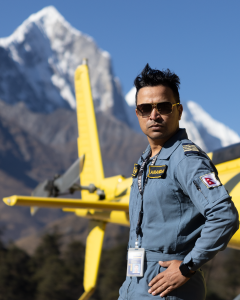
Ananda “Andy” Thapa
Ananda “Andy” Thapa
Operations Director, Altitude Air, Kathmandu, Nepal
A hero to countless individuals, Ananda “Andy” Thapa is humble by nature. Born in the remote area of Dhading District in Nepal, Thapa grew up in extreme poverty. As a child, he averaged one meal a day and had no electricity, telephone, or even a nearby medical facility. He did, however, have a dream: he wanted to fly. So he worked hard in his studies, earning a spot in a Nepali Army education program in Kathmandu.
Because his family couldn’t afford higher education, Thapa enlisted in the Nepali Army’s officer program, hoping to be selected for pilot training despite it being exceptionally rare in the army. Timing was on Thapa’s side, however. Civil war broke out in Nepal during his second year of cadet officer training, creating a need for helicopter and fighter pilots. Amid fierce competition, Thapa was chosen and learned to fly helicopters.
After eight years flying in the army, Thapa accepted a civilian helicopter pilot position where he could apply his experience and understanding of the small villages, remote regions, fast-changing weather, and terrain of Nepal to perform rescues and extractions.
Thapa has since been credited with hundreds of, if not well over 1,000, technical rescues throughout Nepal and surrounding regions. He is one of the elite skilled pilots who have extracted multiple climbers from Mount Everest, landing as high as Camp 2 above 21,000 ft. (6,401 m). He participated in the much-publicized search for Bulgarian mountaineer Boyan Petrov in 2018, which unfortunately ended with no sign of Petrov.
In 2022 alone, Thapa participated in three large rescues: he airlifted several climbers from Mount Everest’s Camp 1 and Camp 2, evacuated two people at 22,349 ft. (6,812 m) from Ama Dablam using a human longline technique, and, together with another company rescue pilot, rescued 72 Nepalese and foreign visitors from a remote region of Nepal who had been stranded by extremely bad weather.
Thapa has also helped families receive closure. In 2018, famed mountaineer Kim Chang-ho, the first Korean to summit the word’s 14 tallest mountains without supplemental oxygen, was killed along with eight others at the base camp of Gurja Himal in Nepal. After searchers discovered their bodies, Thapa transported them down the mountain via longline.
The one rescue that stands out the most in Thapa’s mind took place on Jun. 18, 2021. Five days before, more than 100 people trekked to areas bordering Tibet from the Nepalese town of Manang to collect Yarsagumba, a medicinal fungus, and didn’t return.
Thapa took the lead in the search, flying their route up the mountains. While most were feared dead, Thapa found them all alive between 14,000 ft. (4,267 m) and 17,200 ft. (5,243 m), stranded after heavy snowfall. He transported the most critical, about 70 in all, back to a lower-altitude safe zone within an incredible two hours and 20 minutes.
He also delivered a supply drop of food and other survival goods to the remaining 30 foragers as the weather deteriorated and fuel ran low. Thapa says this rescue was the most successful and also the fastest he has conducted in his career, but only one of a countless number that have made the helicopter the real hero to the people of and visitors to Nepal.
Law Enforcement Award
For contributions to the promotion and advancement of rotorcraft in support of law enforcement activities
Sponsored by MD Helicopters, LLC
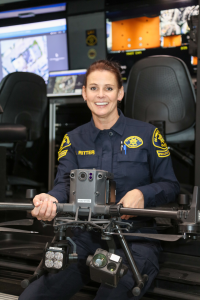
Penny Ritter
Penny Ritter
Criminalist, Alameda County Sheriff’s Office, Oakland, California, USA
A 14-year criminalist at the Alameda County Sheriff’s Office (ACSO), Penny Ritter helped turn the agency’s fledgling small uncrewed aerial system (sUAS) program into an award-winning, nationally recognized initiative that supports not only the county’s work but also that of agencies across California and around the nation.
Traditionally, as part of her crime-lab work Ritter employed laser scanners to map scenes. Five years ago, the lab commander approached her with a challenge: the sUAS team of eight aircraft and five pilots had received a free trial license to Pix4D, a photogrammetry and drone mapping software. He asked if she’d be interested in learning how to register the Pix4D data the drones captured to provide scene mapping.
“I said, ‘Sure. Not a problem,’” Ritter recalls with a laugh. “I had no idea how to use the software and didn’t even know what a drone looked like. He gave me some of the data, and I went to YouTube to watch training videos and took a class. Then, I started modeling crime scenes and making 2D and 3D maps for measurements.”
The maps proved extremely valuable and led to approvals to expand the team with more equipment and operators. Again, the commander tapped Ritter, this time to help lead the program. She learned to fly and maintain the county’s drones and earned her FAA Part 107 certificate to operate them. She built spreadsheets to track equipment, maintenance, pilot licenses and training, equipment needs, operations, and more. She also developed relationships with drone manufacturers and other representatives in the sUAS field.
While ACSO is responsible for unincorporated areas of the county, its team often supports incorporated cities within Alameda County and beyond. Starting with the Tubbs Fire in October 2017, ACSO began using its sUAS assets annually to assist with mapping disaster zones. Ritter’s team also mapped the Camp Fire, California’s deadliest and most destructive fire. For that job, Ritter helped lead a task force of 16 agencies that conducted 518 sUAS flights to collect 70,000 images over 17,000 acres to map the town of Paradise after the tragedy.
ACSO credits Ritter with helping locate and arrest countless dangerous individuals and document many crime scenes. Ritter also assists with crime scene reconstruction, such as for the Hart family murders in Mendocino County in 2018. Ritter led the team that helped search for the victims of the murder–suicide, in which the family vehicle was driven off a 100-ft. cliff. The team mapped the crime scene, producing an orthomosaic map and 3D model used in the coroner’s inquest.
Today, the ACSO sUAS team includes 110 aircraft and 25 pilots. Ritter ensures that all aircraft are up and running, assisting with updates and repairs 24/7. She’s also instrumental in helping several other agencies launch and expand their sUAS programs by offering her expertise and support. In return, many agencies support ACSO’s sUAS team in fire mapping.
“Penny is an exceptional asset to ACSO because of her leadership and her willingness to assist public safety agencies around the nation,” says ACSO captain Paul Liskey. “She not only knows how to safely operate each aircraft ACSO deploys, but she continually offers her time and support to train other team members and local agencies.”
Safety Award
For outstanding contributions to the promotion of rotorcraft safety and safety awareness
Sponsored by BLR Aerospace
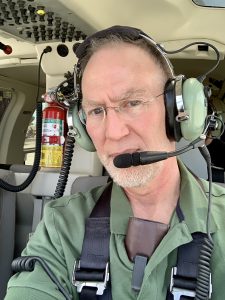
Eric Bechhoefer
Eric Bechhoefer
CEO and Chief Engineer, GPMS International, Waterbury, Vermont, USA
Eric Bechhoefer changed the playing field for aircraft safety with the helicopter health and usage monitoring system (HUMS) for single-engine helicopters.
After retiring from his career as a naval flight officer, Bechhoefer pursued a PhD in engineering with an interest in advancing aviation safety. He saw his dream come true at Goodrich Sensor Systems, where, in the 2000s, he helped pioneer the first-generation HUMS and condition-based maintenance systems, which the company designed for the UH-60 Black Hawk, CH-47 Chinook, and S-92.
“It was great work, but I really felt if anyone needs these systems, it’s the smaller operators with light aircraft and single engines,” he explains. “I wanted to design a lighter, much less expensive solution for smaller operators with those aircraft that don’t have the assets and finances for the current HUMS programs. I wanted to give them the same level of safety and protection the big guys get and be able to easily add functions as users identify their needs.”
Bechhoefer began to develop an idea, leaving Goodrich in 2010 to work at a wind turbine company, where he was tasked with developing a sort of HUMS for wind turbines. There, without the regulatory oversight of aviation, he was able to rapidly design and test prototypes for the turbines, which break down regularly. After three years of development, he had a product design that could work with light helicopters. In 2012, he copublished and presented a white paper arguing for improving HUMS for the light-helicopter market and went to work on the application.
In 2013, he cofounded Green Power Monitoring Systems (GPMS) International to bring his vision to reality. In 2018, the company launched its first product, a lightweight, affordable, next-gen HUMS solution applicable to all helicopters regardless of make, model, or mission. He has since overseen the design, certification, and sale of HUMSs for many helicopter models, including the Airbus AS350; Bell 212, 407, 412, and 429; Mil Mi-8, Mi-17, and Mi-171; and MD 530F.
An active industry champion for HUMS, Bechhoefer continues to promote the benefits of today’s advanced HUMS and condition-based monitoring and maintenance. He is a founder and fellow at the Prognostics and Health Management Society, a fellow of the Society for Machinery Failure Prevention Technology, and a senior member of the Institute of Electrical and Electronics Engineers. He also sits on the Vertical Flight Society’s HUMS Committee and the SAE Aerospace HM-1 Committee covering integrated vehicle health management.
“Dr. Bechhoefer’s contribution to rotorcraft operational and maintenance safety simply stands above all others,” says Garmin International Senior Systems Engineer Brent Butterworth. “Through his research and development, he has taken a system only large helicopters and fleet operators could utilize to one where all sizes and budgets of Part 27 or 29 aircraft can reap the benefits of health monitoring. This has had a radical impact on the knowledge, awareness, and understanding of how the operation of an aircraft affects the health of the aircraft.”
Bechhoefer continues to research and innovate. His industry contributions include 34 patents and more than 150 papers on the condition-based maintenance, diagnostics, and prognostics of rotating equipment.
Maintenance Award
For significant and distinct contributions to helicopter maintenance
Sponsored by Rolls-Royce
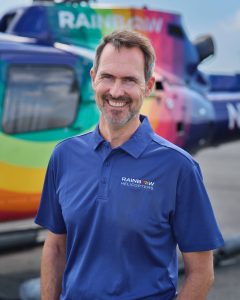
Mike Iven
Mike Iven
VP of Maintenance, Rainbow Helicopters, Honolulu, Hawaii
As a young child in Germany, Mike Iven knew he wanted to be a pilot. He remembers being very motivated early on to learn English, the language of international aviation.
While flying was always his main goal, Iven also wanted to ensure he would be marketable and could control his own safety by obtaining his maintenance certificate.
“I’ve always been very mechanical, so it was a very easy education receiving my maintenance certificate,” Iven recalls. “It really did increase my opportunities and my ability to ensure safety.”
In 1995, Iven began work toward his EASA (European Union Aviation Safety Agency) aircraft maintenance license in Germany while working as an early-morning bread-truck delivery driver and flea-market manager. During breaks from maintenance training, he flew to the United States, where he earned his private pilot airplane and private pilot helicopter certificates.
Iven applied for and won a green card in 1998 through the US State Department’s Diversity Visa Program, whereupon he flew to Helicopter Adventures in Concord, California, to complete his helicopter training. Recognizing Iven’s potential, Helicopter Adventures founder and CEO Patrick Corr hired him as a shop hand, later promoting him to full-time aviation maintenance technician once he converted his German license to an FAA A&P.
Iven earned his helicopter ratings and added flight instructor to his duties at Helicopter Adventures before spreading his wings to Hawaii to take both a director of maintenance and a tour pilot position for Rainbow Pacific Helicopters. While there, he earned his FAA inspection authorization certificate at the age of 28.
An exceptionally skilled, knowledgeable, and generous professional with an unwavering dedication to safety, Iven opened his own general aviation maintenance shop before joining Makani Kai Helicopter Tours as director of maintenance, where he sought and obtained an FAA Part 145 repair station certificate for the company.
Throughout his career, Iven has continued to add to his skills and expertise. He returned to the mainland to gain customer service and project management experience in the manufacturing side of the helicopter industry at Safran and, later, Schweizer.
During the COVID-19 pandemic, Iven returned to Hawaii to accept his current position as VP of maintenance at Rainbow Helicopters, where he has helped the company expand its turbine fleet and integrate into Rainbow’s tour business its first Airbus AS350 helicopter.
When not working in the hangar, Iven helps mentor the next generation of aviation maintenance techs. He talks to students about the benefits and personal rewards of being an A&P, using his own rich career as an example of all that an aviation mechanic/engineer can achieve with passion and dedication.
“After a lifetime of extraordinary achievement, you can find Mike in a maintenance hangar in Hawaii putting people first,” says Rainbow Helicopters founder Nicole Battjes. “He serves others, which is the highest compliment we can pay him, and through his example he is inspiring the next generation of great helicopter mechanics, making the industry a better place.”
Lifetime Achievement Award
For long and significant service to the international rotorcraft community
Sponsored by Bell
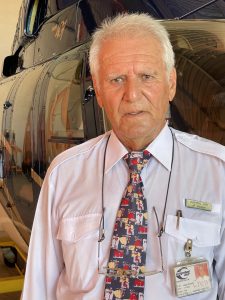 João “John” Vinagre
João “John” Vinagre
Director and Founder, Capital Air, Johannesburg, South Africa
João “John” Vinagre moved to Mozambique from Portugal with his family when he was just 6 months old, fleeing the post–World War II damage and poverty in his homeland. A fourth-generation pilot, he earned his private license in airplanes at 19 years of age and soon added his helicopter ratings after joining the army.
Vinagre was on a course to take over the family helicopter business when the 1974 Carnation Revolution forced Portuguese citizens to leave Mozambique in 1975. The new ruling political party seized his family’s company, including 13 aircraft.
Vinagre and his family left Mozambique for South Africa with little more than $10 in today’s currency, but he was eventually able to find a flying job with a local company in his new country. When the company’s owner passed away eight years later, Vinagre purchased its Bell 206 with a business partner. Not long after, he secured the name and license of a South African company in liquidation, Capital Air.
Operating out of a wooden-plank Zozo Hut at Rand Airport (FAGM) in Johannesburg, Vinagre rebuilt his family’s legacy with Capital Air, seeking new opportunities anywhere they could be found, from nature conservation, weddings, and television broadcasting to schools and trade shows. No job was too small, and his tenacity paid off. In the late 1980s, Capital Air obtained exclusive rights as the transportation operator for the Rand Show, the largest annual consumer exhibition in southern Africa. Drawing tens of thousands of visitors annually, the show helped put Capital Air on the map.
As Capital Air grew in size and reputation, it added an authorized maintenance organization certification from the South African Civil Aviation Authority, the country’s second such certificate at the time. The company expanded its capabilities to the private security sector, gaining a firm footing in hijacked- and stolen-vehicle tracking and recovery throughout Sub-Saharan Africa.
The work in the region had its dangers. While searching for a hijacked truck in 1994, Vinagre’s helicopter came under fire. The aircraft suffered an engine failure and crashed when its rotors hit structures in the crowded area after an autorotation. Vinagre evacuated his four passengers, even protecting one from an approaching mob bent on robbing the group by getting between the attackers and the passenger. Vinagre was stabbed in the back for his effort, but all were saved by Good Samaritans on the scene.
Vinagre has come full circle in his career. He opened an affiliate operation in 1999, Helicopteros Capital, in Mozambique, returning the family business to the country more than two decades after it was lost.
Now, more than 40 years since Vinagre took over the name, Capital Air has grown to 1,000 employees and 17 helicopters, the largest fleet in South Africa. It remains a family business, with three of Vinagre’s children now helping run the company with a commitment to Vinagre’s philosophy of exceptional customer service.
“Flying was in my bones,” Vinagre says. “I was very lucky I found a flying job and could start over in South Africa. I am proud of the company we’ve built and hope to share it with many future generations.”
2022 Salute to Excellence Winners
Lifetime Achievement Award
The Lifetime Achievement Award salutes excellence in management and leadership. The award is granted to an individual for long and significant service to the international helicopter or UAS aircraft community. Nominees need not be licensed pilots.
Dwayne Williams
Pilot, Aero Dynamix, Euless, Texas, USA
Dwayne Williams has enjoyed a long and storied career in the helicopter industry. Since learning to fly in 1965 with the US Army, he’s accrued more than 16,000 hours of accident-free flight time and 57 years of experience flying combat, offshore oil-support, flight-training, and test-pilot operations.
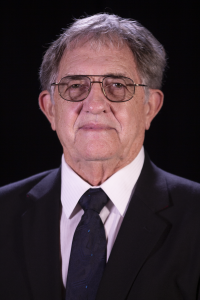
Dwayne Williams
Williams’s career began with a tour in Vietnam, followed by two years as an instructor pilot at Fort Wolters, Texas. After leaving the army, he joined Petroleum Helicopters Inc. (PHI), where he flew offshore in the Gulf of Mexico for almost five years.
In 1974, Williams was offered the opportunity to train Iranian Army pilots in Isfahan, Iran, for Bell Helicopter International. There, he put his military-standardization and instructor-pilot skills to strong use, soon becoming the chief pilot for the advanced flight training program, a position he held until the program ended in 1979.
Upon returning to the United States, Williams joined Bell Helicopter Textron as a production test pilot, demonstration pilot, and international delivery pilot. During this period, he traveled to virtually every corner of the globe promoting Bell and its products. He later joined Bell’s experimental test-pilot staff at Bell’s Flight Research Center and in 2000 became Bell’s chief pilot
Williams was the first person to fly several Bell aircraft, including the 206L-3, 400, AH-4BW SuperCobra, and 230. He was also a test pilot on the first Bell/Agusta Model 609 commercial tiltrotor flight. His exemplary flying skills enabled him to become the company’s first acrobatic pilot as well as the demonstration pilot for the 680-rotor system on the Bell 222.
Williams also served as a test pilot for flights on the Bell XV-15 tiltrotor, the forerunner of the Marines’ V-22 tiltrotor aircraft. During this time, Williams was also appointed a designated engineering representative (DER) flight test pilot by the FAA.
Not long after retiring from Bell in 2005, Williams accepted the position of chief pilot, director of flight operations, at MD Helicopters, where he directed helicopter production and delivery flights as well as pilot and maintenance training. While there, he served on Embry-Riddle Aeronautical University’s advisory council, hosting helicopter students visiting the MD factory and supporting them as a mentor and advisor. As a part of this service, he developed an annual MD 530 transition scholarship for the school’s top helicopter student-pilot graduate.
In 2013, Williams accepted the chief test-pilot position at Marenco, the designer, developer, and producer of the first Swiss-made helicopter, the SH09. There, he had the honor of performing the aircraft’s first test flight.
In 2015, Williams received the FAA’s highest honor for a pilot, the Wright Brothers Master Pilot award, which recognizes 50 years of safe flight with no accidents on a pilot’s record.
Today, Williams serves as chief test pilot and certification pilot for Aero Dynamix, a company that designs cockpits that are night-vision goggles (NVG) compatible.
Through all his positions and experiences, Williams has left his mark across the industry. His multiple nominations for the Lifetime Achievement Award mentioned his dedication, friendliness, honesty, leadership, extraordinary skill, and desire to support others in their journey.
“I have always thought of myself as just a pilot,” Williams says. “I’ve taken this very seriously. In the world of test flying, the truth is, you’re responsible for everyone who flies in that aircraft after you. It’s a big responsibility, and it’s difficult. I have a strong work ethic and always aimed to do my very best. I always told the engineers the truth, whether they’d like it or not. To now be recognized by the industry and so many peers for doing a job the way I felt it should be done is really very humbling. It’s not just a measure of your skill, it’s a reflection of your entire career. I’m honored.”
2021 Salute to Excellence Winners
Lifetime Achievement Award
Sponsored by Bell
Michael Hynes
Pilot, Maintenance Technician, Industry Professional
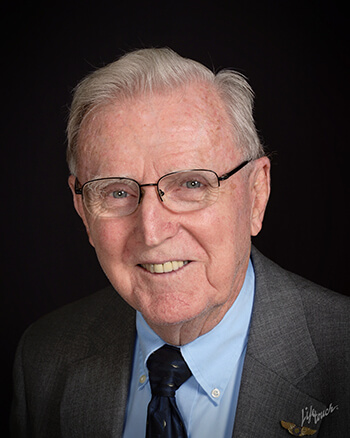 Helicopter Association International (HAI) is pleased to announce Michael Hynes, a 65-year veteran of the aviation industry, is the 2021 recipient of the association’s Lifetime Achievement Award. The award, sponsored by Bell, salutes excellence in management and leadership and is granted to an individual for long and significant service to the international helicopter community.
Helicopter Association International (HAI) is pleased to announce Michael Hynes, a 65-year veteran of the aviation industry, is the 2021 recipient of the association’s Lifetime Achievement Award. The award, sponsored by Bell, salutes excellence in management and leadership and is granted to an individual for long and significant service to the international helicopter community.
An airplane ride nearly 80 years ago ignited a fire in Michael Hynes that led to a 65-year aviation career.
Impassioned by that childhood ride, he joined the US Air Force when he was 17 to become an aircraft mechanic. He was stationed at Palm Beach Air Force Base after graduation and immediately joined the base Aero Club, eventually earning his airplane commercial certificate with a flight instructor rating.
In the first few years after leaving the Air Force, Hynes and a partner established a thriving airplane flight school and Hynes started a fixed-base operation, aircraft maintenance shop, and charter service, which was one of the first Learjet corporate operators.
In the 1960s, after hearing about a Bell helicopter that achieved a top speed of over 150 kt, Hynes saw potential in adding helicopters to his school. He acquired a Brantly B-2 helicopter in 1967 and taught himself to fly it, earning his commercial and flight instructor certificates in 1968. Hynes then formed one of Florida’s first GI Bill helicopter flight schools.
Not long after, he formed Brantly Operators, a maintenance and parts resource for the more than 350 Brantly helicopters in use. He transported parts in his Learjet from Wichita, Kansas, where Brantly Helicopter Corp. had relocated after being purchased by Learjet.
Hynes’s ties to Brantly soon led to him securing ownership of the two Brantly type certificates, a vast parts inventory, and full production tooling in 1971 when Learjet filed for bankruptcy. Hynes moved his Brantly operation to Frederick, Oklahoma, and created a new company, Hynes Aviation Industries. During those years, he received FAA production certification for the redeveloped helicopter, now called the Brantly-Hynes B-2. He also designed and tested fly-by-wire artificial intelligence systems for drones and remotely piloted vehicles (RPV). The Hynes H-5T, based on Hynes’s changes to the Brantly Model 305, won a multimillion-dollar Army RPV contract in 1984.
At the same time, Hynes operated his now Oklahoma-based flight school, assisting former Vietnamese military helicopter pilots to transition to successful piloting careers in the United States using Hynes aircraft. He was appointed as a designated pilot examiner to support the training and has since administered more than 800 airplane and helicopter flight exams to pilots from 38 countries.
Aviation has had its ups and downs for Hynes. He had backed a production loan for his US Army contract himself, and when payments from the army fell behind, he was forced into bankruptcy and had to sell his Hynes Aviation Industries assets.
Undaunted, he changed course and attended college, achieving his bachelor’s, master’s, and doctoral degrees. In addition to teaching high school and adult career and technical education courses, he has also taught at Western Oklahoma State College and Embry-Riddle Aeronautical University Altus Air Force Base campus. Hynes was appointed director of aviation education programs at the College of the Ozarks in 2003, where he worked and continued to perform consulting tasks for others in the aviation community until retirement.
Throughout his six and a half decades in aviation, Hynes has built 16,500 flight hours in 314 types of aircraft. He is one of the few individuals awarded both the FAA’s Charles Taylor Master Mechanic Award and its Wright Brothers Master Pilot Award.
Today, Hynes focuses on future generations. Now semiretired, he currently oversees a $450,000 trust fund that provides annual scholarships for students interested in aviation and focuses on inspiring future aviation enthusiasts.
Safety Award
Sponsored by BLR Aerospace
Neo Aik Sia
Rotorcraft Industry Professional
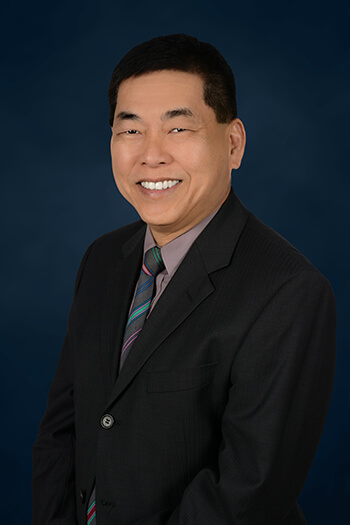 Neo Aik Sia was destined for aviation at an early age. Fascinated with aircraft, he joined the Junior Flying Club in 1972 in his native Singapore before he could even drive a car. He later earned his private pilot airplane rating six months after graduating from high school.
Neo Aik Sia was destined for aviation at an early age. Fascinated with aircraft, he joined the Junior Flying Club in 1972 in his native Singapore before he could even drive a car. He later earned his private pilot airplane rating six months after graduating from high school.
Neo was drafted into the Singapore National Service shortly after school. Seeing an opportunity to stay in aviation, he opted to leave the service three months later to enlist full time with the Republic of Singapore Air Force (RSAF) as a pilot officer. Once in the RSAF, he found his calling in safety programs.
Throughout his 29-year career at the RSAF, Neo progressively advanced through the ranks in areas where he could champion safety and implement safety programs. Throughout his service, he held positions including head of accident prevention, senior staff director and lecturer, director of operational development, senior pilot, and squadron commander.
While serving in the highest’s safety positions in the Air Force, Neo was responsible for all RSAF aircraft, maintenance, and ground safety and accident prevention programs. He developed and implemented a safety management system (SMS) in 2000 that has since proven its effectiveness through reduced accidents and incidents. He has taken this experience with him since retiring from the RSAF, helping develop and refine SMS programs for civilian organizations.
After migrating to U.S. in the early 2000s, Neo obtained his FAA airline transport pilot (ATP), ground instructor, and advanced instrument ground instructor certificates. He later worked with Air Methods flying medevac, search and rescue, and maintenance test flight missions in multiple locations across the U.S.
In 2016, Neo was hired as the safety, quality, and standards manager for Vision Technology – Aviation Academy of America, a national and international airline flight training academy in San Antonio, Texas. While there, he developed and implemented SMS and quality assurance system programs aimed at achieving and sustaining a zero-accident record. When an incident occurred, he conducted investigations and, with the findings, developed and implemented changes in maintenance, operations, and training.
Most recently, Neo served as Blue Hawaiian Helicopters’ regional safety director. In this role, he was responsible for promoting safety and implementing the FAA SMS and the Aviation Safety Action Program (ASAP) across Blue Hawaiian’s companies. He was also appointed as an FAA Safety Team (FAAST) representative. He concurrently prepared the companies for external audits by the Tour Operators Program of Safety (TOPS) and by STARR Aviation’s loss control consultant.
Throughout his career, Neo is recognized for developing safety roadmaps for a top-down identification of threats, hazards, and risk mitigation programs to safeguard operations.
Neo’s passion is driven by the belief that all accidents are preventable. He focuses on and mentors members of the industry on the need to understand accident causation, human factors, SMS, and the incredible importance of adopting safety excellence and safety culture as a way of life to eliminate accidents.
“I believe building a positive safety culture by changing mindset, attitude, and behavior is the biggest challenge of implementing a safety program,” Neo says. “Without a positive culture, the program is often implemented robotically with minimal effort. I emphasize the need to embrace safety at all levels. With total safety as a lifestyle, we all benefit – ourselves, our families, and our organizations.”
Pilot of the Year Award
Sponsored by ROTOR Magazine
LCDR Robert McCabe
Pilot, U.S. Coast Guard Air Station Cape Cod
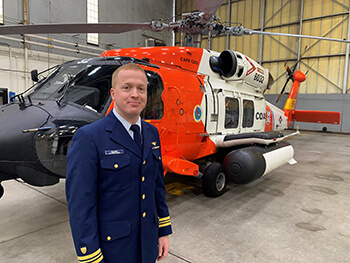 U.S. Coast Guard (USCG) Lieutenant Commander Robert McCabe didn’t set out to be a helicopter pilot. He joined the USCG with a general desire to be involved in active humanitarian and search and rescue work. While assigned to a ship in Astoria, Oregon, he was inspired watching the MH-60T Jayhawks perform multiple harrowing rescues. He changed his focus and attended flight school after his first USCG tour.
U.S. Coast Guard (USCG) Lieutenant Commander Robert McCabe didn’t set out to be a helicopter pilot. He joined the USCG with a general desire to be involved in active humanitarian and search and rescue work. While assigned to a ship in Astoria, Oregon, he was inspired watching the MH-60T Jayhawks perform multiple harrowing rescues. He changed his focus and attended flight school after his first USCG tour.
McCabe returned to Astoria in 2012 as an MH-60T pilot. After that tour, he was stationed in Sitka, Alaska, before his current assignment at USCG Air Station Cape Cod in Massachusetts.
Today, McCabe stands alert duty for missions across New England from New York to Maine. He has accumulated more than 2,700 helicopter hours and countless successful rescue missions. In addition to pilot-in-command, he is also an instructor pilot and flight examiner, instructing and mentoring junior pilots and crewmembers.
On the evening of Nov. 24, 2019, his skills and experience were put into practice. The fishing vessel Leonardo had suddenly and unexpectedly capsized 24 miles southwest of Martha’s Vineyard, throwing all four crewmembers into the 50-degree water.
Once on scene, McCabe’s crew found a lone survivor in a life raft among the debris field in 10-foot seas and 30-knot winds. The severely hypothermic survivor was hoisted aboard and successfully stabilized. During the rescue, the sun set and a squall with sleet came in, reducing visibility to a quarter mile and raising the seas to 15-foot-waves.
Rather than a typical search altitude of 300 feet, McCabe directed the other pilot to fly a low 80-foot air taxi to continue searching the debris field for remaining Leonardo crewmembers. With their focus mostly outside the aircraft searching the rough water with spotlights in flying sleet, both pilots became disoriented.
The aircraft started to bank 40 degrees, simultaneously pitching more than between 14 degrees nose up, and rapidly slowing while descending.
“The visual inputs we were getting were inconsistent,” McCabe said. “The sleet gave that Star Wars warp speed illusion in the searchlight beam, making us feel we were flying at 50 kts. The waves gave us the sensation were drifting right. Neither was right. I soon realized we had ‘the leans.’”
Within 10 seconds of becoming disoriented, McCabe recognized it. He announced the aircraft’s state and immediately coached the flying pilot through a successful instrument takeoff to stable flight. McCabe’s situational awareness, decisiveness, and assertiveness were instrumental in leading the crew to avoid a near catastrophic situation.
“Admitting disorientation, then the transition from it to correction is very, very difficult,” he recalls. “It’s extremely difficult to convince yourself to trust your instruments and make the correct inputs. That experience really brought home that we as a community need to fess up and do everything we can to learn from our mistakes.”
When McCabe returned, he provided a detailed description of the event to the air station’s safety department. With the support of the USCG’s Aviation Logistics Center, the flight data monitoring system data was used to create an animation of the flight for training. This effort resulted in USCG-wide policy recommendations including standardizing training on night vision goggle illusions, developing a manual addressing aeromedical factors of flight, and adding a discussion of spatial disorientation to every annual check-ride.
Maintenance Excellence
Sponsored by Rolls-Royce
David Wayne Fox
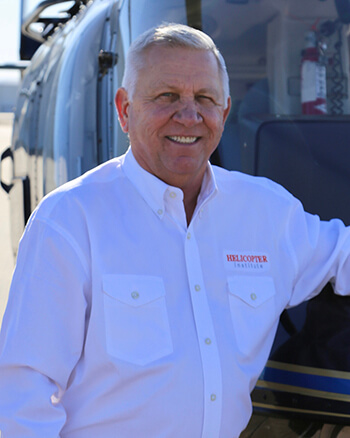 David Wayne Fox has been around aircraft since he was old enough to toddle. Some of his most cherished memories are accompanying his mechanic father to the airport. His dad was his inspiration as they built kit airplanes together and performed other maintenance work on Bell 47s.
David Wayne Fox has been around aircraft since he was old enough to toddle. Some of his most cherished memories are accompanying his mechanic father to the airport. His dad was his inspiration as they built kit airplanes together and performed other maintenance work on Bell 47s.
As a teen in 1970, David landed his first paying aviation job as a mechanic’s helper working on Bell 47s. Three years later he joined the U.S. Army and worked as a crew chief, maintaining OH-58, UH-1, and AH-1G helicopters and serving a tour in Korea.
When he returned, David relied on his on-the-job training and self-study to achieve his A&P certificates. Not long after, he earned his private and commercial helicopter certificates.
In 1980, he and a friend founded Helitrans Company Inc.– a Part 135 operator and Part 145 repair station supporting the oil and gas industry off the Gulf Coast of Texas. He served as both the director of maintenance and chief inspector, having received his inspection authorization from the FAA.
For 20 years, Helitrans operated with a perfect safety record. The company did not have any accidents, incidents, violations, or forced landings.
“My proudest accomplishment is Helitrans’ record,” David says. “I believe in having good people working for you and maintaining and operating the aircraft properly to manufacturer recommendations are to credit for that. I was very serious about following the rules and not cutting corners. Money is not everything. Sometimes people lose sight of that.”
David sold Helitrans in 2000 and enjoyed semi-retirement as he did a little maintenance and consulting work before Bell invited him to be a ground school and simulator instructor at the Customer Training Academy for their light helicopters in 2001. For that position, he earned his certified flight instructor rating.
David became a fixture at Bell, not just at the training center, but also within the accident investigation and legal departments. He was also the go-to expert for Bell owners and operators around the world. He would teach every system on the aircraft, sharing his stories and anecdotes to help solidify student knowledge while engaging them to learn. He developed an astronomical list of connections and still gets calls from people around the world when they’re stuck on a maintenance challenge.
“I’ve been doing this so long, chances are I’ve seen some of the more obscure or unique issues with these aircraft and may have a way to help,” he says.
While at Bell, David was instrumental in developing the Bell 407GX and GXi courses as well as leading and standardizing instruction for light helicopters.
David retired from Bell in 2020 and now works part time for the Helicopter Institute in Ft. Worth, Texas, providing pilot training. He also still moonlights as a mechanic, providing maintenance for select clients.
These days, the most rewarding work for David is mentoring younger mechanics. He believes it’s important for the older generation to share their wealth of knowledge and skills, as well as their experience and values.
“It’s important to mentor these younger people,” he says. “This is what my dad did with me. He mentored me on how to do things correctly to ensure when you send an aircraft out, it will come back. Part of that is emphasizing the importance of following the manufacturers manuals and maintenance recommendations and developing a good working relationship with your local FAA inspectors.”
Law Enforcement Award
Sponsored by MD Helicopters
Officer John Cooper
Safety and Training Officer, Columbus Division of Police
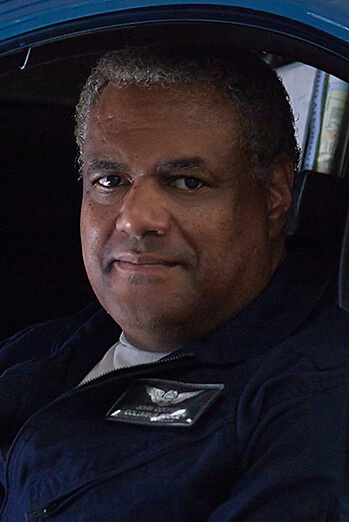 While John Cooper earned his private pilot single engine land rating in his teens, it was helicopters that truly captured his imagination.
While John Cooper earned his private pilot single engine land rating in his teens, it was helicopters that truly captured his imagination.
Using money from his full-time paper route and helping scrap Army surplus helicopters for a helicopter operator in Maryland, Cooper earned his private helicopter add-on certificate in an Enstrom in the late 1970s. His training then came to a halt as he sought the funds and a path to a helicopter pilot career.
Cooper’s big break came in 1988 when he was hired by the Columbus Division of Police in Columbus, Ohio. The Columbus Police’s robust helicopter aviation unit trained officers to fly. Cooper served as a street officer until he was accepted into the aviation unit in 1991. There he earned his commercial helicopter certificate and flew as a helicopter tactical pilot. A few years later, he earned his certified flight instructor rating. In 1996, he became the unit’s safety and training officer.
Today, at 57, Cooper is the both Columbus Police’s longest serving pilot in the aviation unit and its longest serving safety and training officer. He’s built 5,900 hours in helicopters, with 3,500 of them being instruction given. During his 30-year career with the unit, he’s also made significant strides to strengthen and build its safety programs and has become an FAA helicopter designated pilot examiner.
In his position, Cooper has two main responsibilities. The first is maintaining and overseeing safety standards for the department’s well-recognized heliport. The second is overseeing all unit pilot training.
In 1999, Cooper helped the Columbus Police become the first police department to achieve Public Safety Aviation Accreditation Commission (PSAAC) accreditation. He’s since successfully achieved reaccreditation in 2012. Columbus Police awarded him its Medal of Merit for both.
The Columbus Police employ 21 pilots who fly the unit’s five aircraft, one Bell 407GXi and four MD530F helicopters. Cooper provides primary, recurrent, and transition training to each of them, ensuring every pilot meets rigorous FAA and departmental standards, including two check rides a year.
At Columbus Police, new additions to the aviation unit come with everything from no flight experience to full certificates. Cooper helps each gain the experience needed to eventually receive pilot-in-command status on the aircraft, with particular emphasis on safety.
“I’m big on safety,” he says. “I put a lot of emphasis on emergency procedures too. We’ve had four engine failures and the pilots put the aircraft down safely in some very confined areas. I’ve had pilots come to me after and thank me for the training. That emphasized for me how important emergency procedures are.”
To increase safety, Cooper helped establish an integrated training system for the department, something for which he again achieved the department’s Medal of Merit. He applied for a grant and added a helicopter ATD to his training equipment to allow for inadvertent instrument metrological conditions (IIMC) training. He developed established decision models based on realistic scenarios and put all the pilots through them. He also invites local air traffic controllers to participate in instrument and IIMC training, acting as ATC to add to the realism.
“I love training,” he says. “I love getting into people’s minds and bringing that understanding. I like taking something complex, breaking it down, and making it easily digestible. That’s what any instructor should be doing.”
Humanitarian Service Award
Sponsored by Sikorsky, a Lockheed Martin Company
California National Guard 40th Combat Aviation Brigade CH-47 and UH-60 Blackhawk Crews
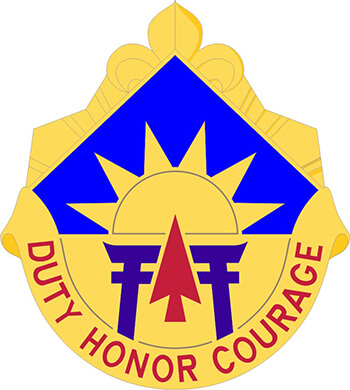 On the evening of Sept. 5, 2020, the rapidly growing Creek Fire in the Sierra Nevada Forest northeast of Fresno had surrounded a large group of campers, hikers, and residents, leaving no avenue for escape.
On the evening of Sept. 5, 2020, the rapidly growing Creek Fire in the Sierra Nevada Forest northeast of Fresno had surrounded a large group of campers, hikers, and residents, leaving no avenue for escape.
Without the assets to reach these stranded people, the Madera County Sheriff called for support from the California National Guard 40th Combat Aviation Brigade. The most deployed unit of the California National Guard, the 40th also provides considerable support to Cal Fire during the state’s ever growing fire seasons, employing its CH-47 Chinooks and Blackhawk helicopters for transport and water bucket drops.
Chief Warrant Officer 5 (CW5) Kipp Goding was at home when he got the call for help from his brigade commander. There was a situation developing near the Mammoth Pools Reservoir, the commander told Goding. People needed to be airlifted to safety.
Goding, a Black Hawk pilot in command based out of Fresno, California, began calling down his phone tree to quickly put together a crew that included pilot Chief Warrant Officer 2 (CW2) Irvin Hernandez, and crew chief Warrant Officer 1 Ge Xiong. At the same time the brigade commander had reached Chinook pilot in command CW5 Joseph Rosamond, who then started calling to pull together a his Stockton, California-based crew – pilot CW2 Brady Hlebain, flight engineer Sgt. George Esquivel and flight engineer Sgt. Cameron Powell.
What followed was a harrowing night that tested the limits of the crews and aircraft alike. An inferno fueled by bone dry vegetation, bark beetle-killed trees, and strong winds, the Creek Fire was unpredictable and creating so much smoke the pilots couldn’t see to fly through it.
After navigating around closed Cal Fire airspace due to active tanker drops, the helicopters were forced to wait an hour until sunset when night vision goggles (NVGs) gave them the advantage to see through the smoke.
Rosamond’s Chinook arrived first, landing on a concrete boat ramp at the reservoir’s edge as the fire burned all around. The flight engineers triaged people, prioritizing those with the worst injuries.
“These people were in flip flops and Bermuda shorts, dressed to enjoy the Labor Day weekend,” Goding recalls. “They had burns, broken bones, difficulty breathing, and bad scrapes.”
The two helicopters each flew three flights, rescuing a total of 242 people and a significant number of pets from the blaze.
“It was really brutal,” Goding said. “We’d return to Fresno, refuel, and head back. In that time, the fire was in a new position. During the day the wind made it jump over vegetation, leaving green spots. After sunset, the wind died down a bit and the fire started burning those previously unburned areas. As a result, we were forced to find a new route to the reservoir each time we returned. No two trips were the same route.”
The crews pushed the limits of the aircraft in the high altitude and fire-fueled temperature. Each aircraft reached maximum weight at some point during the night, yet mechanics back at Fresno inspected the aircraft and gave the green light to continue.
“In many ways this was much worse than flying in combat,” Goding recalls. “In combat, you don’t see people shooting at you. You focus on the job. In the Creek Fire, you saw the wall of smoke and flames. You were flying into it and seeing the terror on people’s faces. We did the job, just as any of our guard members would. I really want to emphasize that. We may be the ones that did this job, but we’re all doing these jobs every day.”
Golden Hour
Sponsored by ROTOR Magazine
University of Maryland UAS Test Site Team, led by director Matt Scassero
Dr. Joseph Scalea, University of Maryland Medical Center
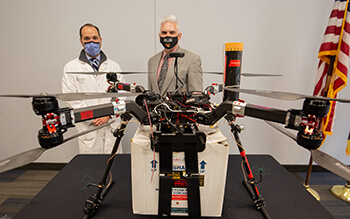 On the night of April 19, 2019, 44-year-old nursing assistant Trina Glispy waited at the University of Maryland Medical Center (UMMC), prepped for kidney transplant surgery as her new kidney prepared to take flight. In her eighth year of dialysis for kidney failure, she was beginning o lose hope. Destiny had another plan.
On the night of April 19, 2019, 44-year-old nursing assistant Trina Glispy waited at the University of Maryland Medical Center (UMMC), prepped for kidney transplant surgery as her new kidney prepared to take flight. In her eighth year of dialysis for kidney failure, she was beginning o lose hope. Destiny had another plan.
When Glispy learned she had a match, she was also offered a very specially opportunity. The kidney could be delivered to the hospital by drone – a medical first that would pave the way for faster organ delivery. Excited by the chance to make a difference, Glispy agreed to the delivery option.
As Glispy was prepped, an unmanned aircraft system (UAS) team, led by University of Maryland UAS Test Site Director Matt Scassero and UMMC Dr. Joseph Scalea, awaited the arrival of the kidney from the Living Legacy Foundation, Maryland’s organ procurement organization. Once secured, the kidney launched in a custom UAS, complete with real time monitoring equipment. It flew 2.8 miles in 9.52 minutes at 300 feet to the rooftop helipad at UMMC, beating the time a car would have made the trip in traffic. It landed smoothly with all organ monitor readings in the green and was soon on its way to the operating room for Glispy.
The idea of organ transport by UAS was born two and a half years earlier. Dr. Scalea approached Scassero after hearing about a fixed wing drone test his team had conducted carrying medical equipment across the Chesapeake Bay and asked if the same could be done for an organ.
“I was excited about the idea and challenge,” Scassero recalls. “This project was a lot more than a drone flight. We needed to develop a drone with redundancies to reduce risk and identify how to track the state of the organ while it was in transit.”
Scassero’s team embraced the challenge. The drone was built from scratch with multiple redundancies all the way down to a parachute system that could be deployed either automatically or manually to protect the organ.
The team also designed the first ever organ monitoring system. The system tracks the state of the organ in transport in real time – recording and uploading temperature, pressure and vibrations to the cloud for live monitoring. What’s more, upon landing, medical staff can remove the onboard SD card to review the same data.
“Nothing like this had ever been developed before,” Scassero says. “Currently an organ is tested after harvest then again after arrival before transplant to ensure it is still viable. With our monitoring systm, we discovered the kidney we flew remained well within the parameters; I’d even say better than it would have in a car or helicopter. The hope is one day this monitoring technology will replace the need for that second biopsy.”
Glispy is doing very well and has returned to many of her former activities. The technology that made that possible for her has also flourished. Members of the original team partnered with an investor to found MissionGO, a company that is developing and expanding this technology and increasing organ donation efficiency through a new software product.
True to the initiative that supported their research, the University of Maryland team is doing good.
W.A. “Dub” Blessing Flight Instructor of the Year Award
Sponsored by Hill Air, Corp.
Nobuyuki Kosuge
Assistant Chief Flight Instructor/Pilot; HeliStream
 Soft spoken and standing at only 5’6”, Nobuyuki Kosuge is hardly an imposing individual. However, his soft spoken demeaner and dedication to safe, skilled helicopter flight have made an immense impact on countless pilots during the last two decades.
Soft spoken and standing at only 5’6”, Nobuyuki Kosuge is hardly an imposing individual. However, his soft spoken demeaner and dedication to safe, skilled helicopter flight have made an immense impact on countless pilots during the last two decades.
Born in Japan, Kosuge grew up near a Japanese Maritime Self Defense Force airbase, sparking his life-long interest in aviation. He received a bachelor’s degree in English from Kanda Gaigo University in Chiba, Japan, but never lost sight of his flying dreams despite the barriers in Japan.
Not long after college, Kosuge visited Southern California on vacation and took his first helicopter flight. He was hooked. In 2001, he enrolled in HeliStream in Costa Mesa, California, and began a six-year journey of obtaining visas, changing schools (and transferring a visa) when one went bankrupt, and applying for a green card. His hard work, and support of those around him, paid off. By 2007, Kosuge had earned his private and commercial certificates, instrument and flight instructor ratings, flight instructor experience in the U.S., ground instruction experience in Japan, and green card sponsorship by HeliStream.
Kosuge began at HeliStream as a primary instructor. His professionalism and work ethic soon led to a promotion to instruct for HeliStream’s Customs and Border Protection Rotor Wing Qualification Course (RWQC), a program he now manages along with a myriad of initial qualification courses for other agencies, including Orange County Sheriff, Riverside County Sheriff, Ontario Police, and Anaheim Police Department. He has qualified dozens of law enforcement pilots through these programs.
Today, Kosuge serves as HeliStream’s assistant chief flight instructor and FAA Part 135 check pilot. He has built more than 10,600 flight hours in 11 aircraft models, with more than 9,000 hours of instruction given. While he no longer provides initial flight instruction, he remains very active with HeliStream’s students providing stage checks and sharing his knowledge as students progress.
“To see our students progress is very satisfying,” Kosuge says. “I enjoy seeing them through each stage as they build their skills and transform into professional pilots.”
Kosuge also runs the company’s transition and recurrent training in the MD500 and AS350, allowing him to provide instrument proficiency checks for many of HeliStream’s law enforcement customers.
One of the company’s part 135 line pilots since 2008, Kosuge also flies a number of utility, photography, charter, and tour flights and serves as a maintenance check pilot. He was also instrumental in developing HeliStream’s Safety Management System.
While many flight instructors may have moved on to different careers by the time they achieve so much experience, Kosuge is happy to stay in the training arena.
“I really enjoy HeliStream itself as a multiple mission company,” he says. “I started with initial instruction, but as they get more missions and support work in utility, firefighting, and other commercial work, I get to expand by skills and still instruct. The variety makes this a very attractive company.”
HeliStream sees Kosuge as one of their biggest assets, both due to his work ethic and also the skill he can share with students.
“Nobu’s abilities as a professional flight instructor are exemplary,” shares HeliStream Chief Financial Officer Barbara Perrin. “He teaches by example, holding himself to the highest standards of professionalism. His students naturally learn from his well-developed and safe habit patterns.”
Excellence in Communication
Sponsored by Lightspeed Aviation
Jeanette Eaton
Vice President, Commercial Strategy and Business Development for Global Commercial and Military Systems; Sikorsky, a Lockheed Martin Company
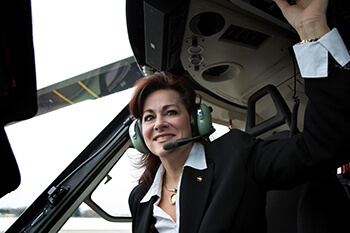 The daughter of an Army helicopter pilot, Jeanette Eaton grew up around aircraft and often attended air shows with her dad. Yet her parents didn’t suggest she too take to the skies. Her mom inspired her to attend college while her dad emphasized the benefits of engineering.
The daughter of an Army helicopter pilot, Jeanette Eaton grew up around aircraft and often attended air shows with her dad. Yet her parents didn’t suggest she too take to the skies. Her mom inspired her to attend college while her dad emphasized the benefits of engineering.
Aviation had other ideas. The defining moment in Eaton’s early career path was the day she interviewed with Sikorsky and toured a CH-53 Super Stallion shortly after receiving her electrical engineering degree.
“I was maybe 21 and I was so overwhelmed and impressed with the helicopter,” she recalls. “The engineering, the power, the missions this aircraft could do. It was all so inspiring. I knew right then and there I wanted to work for Sikorsky and work on helicopters.”
Eaton spent the first 17 years of her career at Sikorsky. Participating in the leadership development program, she steadily gained skills, knowledge, and expertise across a variety of positions while earning master’s degree in manufacturing engineering and an MBA with a focus on manufacturing management as well as a master’s in executive management from Harvard Business School.
Even with all that knowledge and experience, her passion continued to evolve. Through the leadership development program, she discovered she really enjoyed sales. She loved working with, getting to know, and sharing the stories of her customers. She was a natural communicator and thrived off sharing her passion.
Her mentor encouraged her to obtain her FAA ratings in order to increase her credibility and marketability as an aircraft sales representative. Eaton earned her commercial instrument single engine land certificate and landed a job at Bell as a sales manager. Bell helped her add her commercial helicopter certificate and that’s when Eaton really hit her stride.
“I can honestly say some of my most treasured experiences have come from cross country trips across the U.S. in helicopters,” she says. “Those experiences are truly the source of my passion, working with the customers and flying. We all need to be ambassadors to aviation.”
Ten years later Sikorsky recruited her back as director of marketing and she was soon promoted into commercial sales. Today Eaton is responsible for strategy and business development for Sikorsky’s products around the world, supporting customers while also finding ways to grow the customer base. Yet, at the same time she is focusing on giving back.
“Part of my job, one of the things I love to do, is celebrate and recognize our customers and help share their stories,” she says. “As a salesperson, I also feel we have to give back to the community.”
Eaton is very active in volunteer activities that promote aviation and expose the next generation to aviation careers. She volunteers with the Eastern Regional Helicopter Council and the Whirly-Girls and also donates her time to talk to youth about STEM and aviation careers through the Girl Scouts, Junior Achievement, Civil Air Patrol, local schools, and other organizations.
“When I think back to my past, I am thankful for those who inspired me,” she says. “I feel if you’re not exposed to something, you don’t know it exists or is possible for you. It’s important to teach them to open themselves to new opportunities. Looking back, the things that made the biggest impact and helped me find my passion were when I said ‘yes’ to opportunities, even when I was a little afraid to do it. I talk to them about saying ‘yes,’ and finding their passion, as that passion will lead to their authenticity and success.”
2020 Salute to Excellence Winners
Excellence in Communications Award
Sponsored by Lightspeed Aviation
Mark Ogden
Editor, HeliOps magazine, Gerringong, NSW, Australia
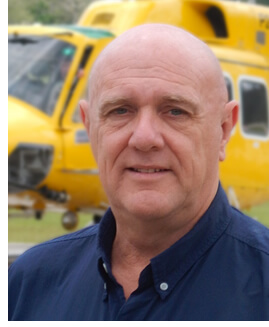 Mark Ogden has been editor of the HeliOps (civil helicopters), HeliOps Frontline (military helicopters), and Air Attack (aerial firefighting) magazines for the New Zealand–based Kia Kaha Media Group for the past 20 years. Ogden, who never shies away from highlighting issues that affect the global rotorcraft industry, is known for his highly respected, hard-hitting editorials, which provide focused analysis of the industry in each issue of all three magazines.
Mark Ogden has been editor of the HeliOps (civil helicopters), HeliOps Frontline (military helicopters), and Air Attack (aerial firefighting) magazines for the New Zealand–based Kia Kaha Media Group for the past 20 years. Ogden, who never shies away from highlighting issues that affect the global rotorcraft industry, is known for his highly respected, hard-hitting editorials, which provide focused analysis of the industry in each issue of all three magazines.
Ogden is also a prolific technical writer, having contributed to various safety documents and manuals, including:
- Aircrewman and Winching Standards for the New South Wales Rural Fire Service
- The Australian Transport Safety Bureau Major Accident Investigation Manual
- Remuda Corp.’s operations manual for the Sling Tank underslung firefighting bucket.
His writings have ranged from company profiles and industry analyses to pilot reports to articles on aviation safety and helicopter flying techniques, as well as safety alerts for the Aviation Safety Network. Additionally, Ogden is a highly skilled helicopter photographer who has shared with his readers many years’ worth of his work.
Humanitarian Service Award
Sponsored by Sikorsky
Los Angeles County Fire Department Air Operations Firehawk Unit
Pacoima, California, USA
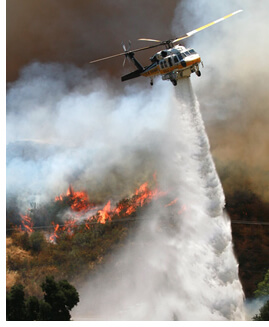 As wildfires once again burn throughout Southern California in 2019, this award recognizes the efforts made by the flight and ground crews of the four S-70 Firehawk helicopters while battling the 2018 Woolsey Fire, the largest wildfire on record in Los Angeles County. The fire destroyed nearly 97,000 acres, with 1,643 homes lost and more than 295,000 people evacuated at its peak.
As wildfires once again burn throughout Southern California in 2019, this award recognizes the efforts made by the flight and ground crews of the four S-70 Firehawk helicopters while battling the 2018 Woolsey Fire, the largest wildfire on record in Los Angeles County. The fire destroyed nearly 97,000 acres, with 1,643 homes lost and more than 295,000 people evacuated at its peak.
The Woolsey Fire began midafternoon on Nov. 8, 2018, just outside of Simi Valley near the borders of Ventura County, Los Angeles County, and the City of Los Angeles. The four S-70s joined multiple other aircraft and ground crews battling the conflagration over the next four days. While the flight and ground crews rotated as necessary, the helicopters themselves were shut down only for refueling and inspection. This resulted in the four LACFDAO helicopters totaling 119.4 flight hours in the first three days—equivalent to almost an entire month’s worth of flying and maintenance in one week—completing more than 350 water drops amid winds ranging from 40 to 70 knots.
Operating on the leeward side of the flames due to high winds, LACOFD helicopters and crews were often the only aircraft working the lines. The winds kept the smoke low across the terrain and homes, forcing the crews to fly and refuel within the smoke as they realized that the only way to attack the fire was to become engulfed in it. Flying conditions quickly became almost nightlike because of the reduced visibility.
In addition to the efforts of the flight crews, the maintenance and support crews worked tirelessly on the ground. Operating in 24-hour shifts, the maintainers kept the aircraft available for every launch, ensuring they were always safe and ready to go. A majority of the 20 people on the maintenance team volunteered into the night and weekend to ensure that routine maintenance was performed efficiently and safely.
W.A. “Dub” Blessing Flight Instructor of the Year Award
Sponsored by H. Ross Perot, Jr. and the Perot family
Dwayne Williams
Chief Pilot (ret.), Bell and MD Helicopters, Arlington, Texas, USA
 Dwayne Williams has the unique distinction of having received five separate nominations this year for the Flight Instructor award, with each nomination coming from a previous recipient of the award.
Dwayne Williams has the unique distinction of having received five separate nominations this year for the Flight Instructor award, with each nomination coming from a previous recipient of the award.
Williams possesses a solid foundation in helicopters, having begun his flying career in the U.S. Army in 1965 and having served in Vietnam from 1966 to 1967, where he developed his leadership and flight training skills. After his military service, Williams continued his career as a pilot for Petroleum Helicopters, Inc. in the Gulf of Mexico.
In 1974, Williams found an exciting opportunity with Bell Helicopter International in which his military experience as a standardization and instructor pilot was welcomed training Iranian Army pilots. He became the chief pilot for the advanced flight program in Iran and continued in that leadership and training role until the close of the program in 1979.
Upon returning to the U.S., Williams was hired by Bell Helicopter Textron as a test pilot, demonstration pilot, and international delivery pilot. During this period, he traveled to virtually every corner of the earth to promote Bell and its products. He next moved to Bell’s Experimental Test Pilot division and rose to become the program’s chief pilot.
Notable achievements in Williams’s time with Bell include conducting first flights in 12 different Bell models. His exemplary flying skills enabled him to become the company’s first acrobatic pilot as well as the demonstration pilot for the 680 rotor system, the first Bell helicopter to be used with loops and rolls as part of the standard flight demonstration. Williams also served as a test pilot for flights on the Bell XV-15 Tilt Rotor, the forerunner of the Marines V-22 tilt-rotor aircraft .
Williams retired from Bell in 2005, but he wasn’t finished with helicopter flight leadership and training. In 2006, he accepted the chief pilot’s position at MD Helicopters, Inc. in Arizona, where, through 2012, he directed the production and delivery of helicopters as well as pilot training.
Most recently, Williams accepted a position as chief pilot with Aerodynamics in the company’s night vision goggles (NVG) program. Currently, he serves as both the certification pilot and the chief NVG instructor at Aerodynamics.
Williams has flown nearly 16,000 accident-free flight hours over his career, with 3,750 of them as instructor. In 2015, the FAA presented him with its prestigious Wright Brothers Master Pilot award, recognizing his more than 50 years of flight.
Law Enforcement Award
Sponsored by MD Helicopters
Bryn Elliott
Founder and Editor, Police Aviation Research, Waltham Abbey, Essex, England
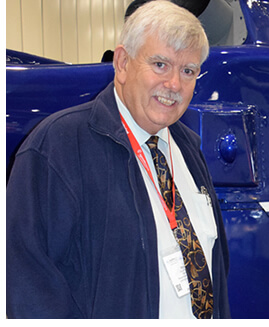 Bryn Elliott served as a police constable for the London Metropolitan Police for 30 years, retiring from the force in 1996. Upon his retirement, he established Police Aviation Research, the parent company of Police Aviation News and the Police Aviation Conference (PAvCon) Europe. His efforts in the sector have connected public safety aviators in Africa, Asia, and the Americas with their peers in Europe.
Bryn Elliott served as a police constable for the London Metropolitan Police for 30 years, retiring from the force in 1996. Upon his retirement, he established Police Aviation Research, the parent company of Police Aviation News and the Police Aviation Conference (PAvCon) Europe. His efforts in the sector have connected public safety aviators in Africa, Asia, and the Americas with their peers in Europe.
Elliott is responsible for the meticulously researched and compiled articles that make up Police Aviation News, often traveling to all corners of the world to gather information on helicopter usage in police aviation, search and rescue, and aeromedical transport. Each issue contains helicopter safety information, including accident and incident reports, that sometimes can’t easily be found elsewhere
PAvCon originated in 2006, when Elliott was invited to assist in setting up a series of police aviation conferences. After three successful shows, Elliott became president of PAvCon in 2009 and has been the sole organizer of European police aviation conferences ever since.
The primary goal of Elliott’s work is the sharing of ideas and resources, an endeavor whose impact on helicopter safety has been significant. As a direct result of his work, notable progress in helicopter safety has been made in such places as Africa, the Netherlands, Germany, and Australia. Public safety aviation across the globe is safer thanks to the research, media, and events Elliott and his company provide.
Golden Hour Award
New South Wales Ambulance Service
Sydney, New South Wales, Australia
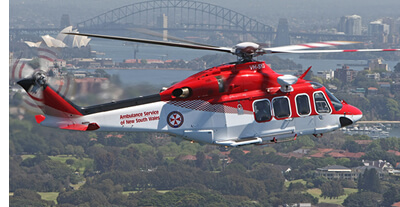 In the 1980s, the NSW Ambulance Aeromedical Rescue Helicopter Service provided a patchwork of rudimentary capabilities across multiple providers. The organization operated successfully for three decades, but the group needed to evolve to ensure it could continue to provide the efficiency, capabilities, and safety standards expected of a modern aeromedical service.
In the 1980s, the NSW Ambulance Aeromedical Rescue Helicopter Service provided a patchwork of rudimentary capabilities across multiple providers. The organization operated successfully for three decades, but the group needed to evolve to ensure it could continue to provide the efficiency, capabilities, and safety standards expected of a modern aeromedical service.
In 2012, the NSW government undertook an independent review that resulted in a 10-year strategic plan to ensure significantly improved patient outcomes for all residents and communities across the state. The review determined the plan could be achieved only by completely transforming the state’s contracting and services delivery model for aeromedical support and by standardizing that model’s integration with NSW medical services. The ambitious plan would then require implementation by a strong team.
Ron Manning, the ambulance service’s director of aeromedical services, and Garry Sinclair, its head of helicopter operations, were true leaders and patient advocates who knew that such transformational change would require vision and courage. The plan would have to entail improved patient outcomes and integrated team training to support a holistic environment and safety above all else.
Today, NSW Ambulance (as the organization is now known) boasts the largest aeromedical helicopter capability within the southern hemisphere. From 7 bases across the state, the service operates a standardized fleet of 12 Leonardo AW139 helicopters in identical aircraft and aeromedical configurations utilizing a common set of operational procedures and standards. The service ensures that NSW Ambulance helicopter doctors and paramedics can quickly reach patients in remote areas. Over 96% of the population of NSW is within one hour of a helicopter and its critical care doctor and paramedic team.
Operating in a geographical region four times larger than the United Kingdom and slightly larger than the US state of Texas, the service has flown some 17,000 hours in two and a half years. During this time, it has conducted more than 10,000 critical care missions at multiple sites, including canyons, crevasses, roadways, rivers, oceans, frozen lakes, cliffs, and cruise ships. For each of its missions, the service’s average response times are less than 10 minutes by day and less than 20 minutes by night.
Central to NSW Ambulance’s focus on safety is the Aeromedical Crewing Excellence (ACE) Training Centre in Bankstown, NSW, which features a growing list of high-fidelity simulation assets, including:
- An OEM Level D AW139 full flight simulator
- An advanced sea survival and underwater escape training facility with full environmental controls
- A virtual reality–based full-crew cockpit and cabin training system
- Wet- and dry-winching training capabilities
- A suite of advanced clinical simulation assets.
The ACE Training Centre is built upon a holistic approach to provide best-in-class training facilities and highly realistic mission-simulation technologies. This approach to training requires a focus on fully integrated technical and nontechnical skills training for helicopter clinical crews, pilots, air crews, engineers, and specialist support personnel.>
Safety Award
Sponsored by BLR Aerospace
Krisna Dewi
Commercial Manager, PT. Sayap Garuda Indah (Heli SGI and Air Bali), Bali, Indonesia
 Krisna is receiving the Safety Award in recognition of her promotion of a business model that places safety above all other business elements, including profit. Her unwavering advocacy and determination to prioritize safety in the company’s operations has also resulted in increased business for her company during a period when Indonesia’s helicopter industry has experienced low or negative growth.
Krisna is receiving the Safety Award in recognition of her promotion of a business model that places safety above all other business elements, including profit. Her unwavering advocacy and determination to prioritize safety in the company’s operations has also resulted in increased business for her company during a period when Indonesia’s helicopter industry has experienced low or negative growth.
In 2014, at the height of the downturn in helicopter support for offshore drilling and amid uncertainty in Indonesia’s resource industry, Heli SGI was facing a shaky future. In a bid to turn things around, the company brought in an industry expert, Ronnie Fahy, to provide guidance. As part of the process, Fahy interviewed the company’s employees; Krisna stood out because of her vision and plan to move the company forward.
Krisna had witnessed other operators reducing expenses, including safety standards, in order to offer lower prices to customers. Her radical plan, considered brave at the time, mandated putting safety and quality above all else and charging accordingly. Her idea also included choosing to work only for clients who understood the business model and were willing to pay for a safety- and quality-first approach.
In an administrative role when Heli SGI’s reorganization began, Krisna was quickly promoted to commercial manager, the second-highest position in the company. As a woman with no aviation background in an industry dominated by experienced men, Krisna found she bore not only the responsibility of reviving the business but also the task of earning her colleagues’ respect. She accepted both challenges with determination, focusing on her goal to turn around Heli SGI by providing higher levels of safety and quality than its competitors.
To support her vision Krisna, with the full support from Heli SGI Board of Directors, had to develop the necessary safety and quality protocols. Some of the resulting projects initiated include:
- Introducing health and usage monitoring systems (HUMS) in single-engine helicopters (not previously seen in the Indonesian helicopter industry)
- Introducing virtual-reality simulation training for longline pilots (another innovation for the Indonesian industry)
- Introducing the dual-FADEC Eagle 407HP into Indonesia, an aircraft with increased power, payload, and range capabilities, which critics considered overkill
- Introducing FAA-approved training programs for longline pilots
- Advocating substantial investment in SGI’s safety department
- Adopting an open-book safety policy, sharing safety concerns with both clients and the industry at large.
Krisna began the process of reinvigorating Heli SGI by giving all prospective clients the same message: “Thank you for inviting us to talk. However, there’s one thing we need to make clear from the start: Heli SGI will not be the cheapest in your procurement process and will not enter into a bidding war. If that’s acceptable, let’s shake hands and begin moving forward.” As might be expected, some potential clients ended the meeting there, and Krisna faced criticism.
The return on Heli SG’s investment in safety is clear. When Krisna received her promotion in 2014, Heli SGI was operating on one contract flying 60 hours a month. Today, in part because of her work in the past five years, the company operates 12 helicopters on contract, flies 600 to 800 hours a month, and has several long-term contracts with large mining companies.
Krisna’s work has not gone unnoticed: other operators are now adopting the Heli SGI safety-first model. And while that means more competition, the end result is that not only has Krisna helped her company grow and become safer, she has helped Heli SGI make the industry become safer too.
Excellence in Helicopter Maintenance Award
Sponsored by Rolls-Royce
Corey Brekke
Afghanistan Maintenance Manager, Columbia Helicopters, Missoula, Montana, USA
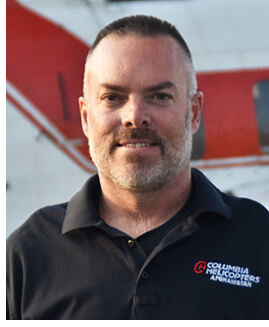 Corey Brekke began his aviation career in Montana, where he obtained his A&P license in the winter of 1991. Subsequently, he worked for eight years in the South Pacific on a 350-foot tuna boat, where he was the only aircraft mechanic onboard, maintaining a Hughes 500.
Corey Brekke began his aviation career in Montana, where he obtained his A&P license in the winter of 1991. Subsequently, he worked for eight years in the South Pacific on a 350-foot tuna boat, where he was the only aircraft mechanic onboard, maintaining a Hughes 500.
In the spring of 2000, Brekke accepted a job with Columbia Helicopters. After only five days on the job, he departed to work in Alaska as the fourth man on a logging crew working on a Columbia Model 107-II Vertol.
Recognized early on for his can-do attitude, work ethic, ability to get along with and lead a crew, reliability, technical knowledge, and overall skill set, Brekke advanced to the position of assistant crew chief in just a year and then to crew chief in 2003. Brekke also forecasts maintenance and logistical needs to support the aircraft during high-utilization periods. His ability to troubleshoot problems and innate desire to get to the root of a technical issue is well known to those who work with him.
In 2011, Columbia received a contract to support Operation Enduring Freedom in Afghanistan, delivering four Vertol 107-IIs and a 234 Chinook. Brekke had started working as senior crew chief on the contract when it soon became clear Columbia needed someone in-country who had the knowledge, skills, and experience to lead a team that would meet the stringent operational readiness rate the military required. Brekke’s extensive operational and maintenance experience made him the obvious choice for the position, and he was promoted to Afghanistan maintenance supervisor.
In the eight years since, Columbia’s fleet in Afghanistan has grown rapidly, due in part because of Brekke’s leadership and direction. These helicopters operate nearly as far as geographically possible from the company’s headquarters and maintenance facility in Aurora, Oregon.
Columbia promoted Brekke to Afghanistan maintenance manager in 2018. The new role required him to focus heavily on managing maintenance resources to support the military’s missions. Instead of using traditional small maintenance teams assigned to specific aircraft, Brekke transitioned the teams to shift work resembling that of an airline, a change that required some team members to work 4 a.m. to 4 p.m. shifts in support of daily flight operations. The remaining mechanics work the night shift, performing aircraft inspections, repairs, component changes, and fleet-health improvements, among other tasks. These actions enable all of Columbia aircraft to be fully mission capable each day, able to meet the customer’s mission requests.
Today, Brekke continues to lead from the front in all aspects of his job, whether working with his maintenance team on Columbia’s Vertol 107-IIs or 234 Chinooks or coordinating with the head office in Aurora to ensure he and his crew have the parts needed to maintain the 90 percent–plus operational readiness rate they’ve exhibited since arriving in Afghanistan. Indeed, Brekke is always looking for new ways to improve and serve. Because of his dedication and leadership, Columbia has been able to maintain its impressive operational readiness rate while providing reliable service to U.S. and NATO troops.
Pilot of the Year Award
Jason Glynn
Pilot, Era Helicopters, Larose, Louisiana, USA
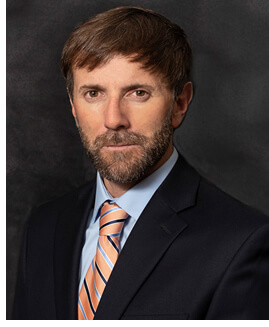 Among its many highlights, Jason Glynn’s stellar career includes having served as a flight instructor for Vortex Helicopters in Mississippi, followed by roles at Era Helicopters with increasing levels of responsibility.
Among its many highlights, Jason Glynn’s stellar career includes having served as a flight instructor for Vortex Helicopters in Mississippi, followed by roles at Era Helicopters with increasing levels of responsibility.
But Glynn didn’t start out in the helicopter industry: first, he repaired diesel-engine generators on petroleum exploration platforms in the Gulf of Mexico. After multiple helicopter flights, however, Glynn’s passion for aviation grew to the point he decided flying helicopters was what he wanted to do for the rest of his career.
Glynn became more familiar with the helicopter industry while in a job performing base support at the Era heliport in Port Fourchon, La., where he loaded and unloaded cargo, refueled aircraft, and washed helicopters. Six months later, Glynn began putting himself through Vortex’s flight school while still working as a ramp hand for Era. An exceptional student, he impressed the school’s instructors, examiners, and owner, who offered Glynn a job as a flight instructor upon his graduation.
Over the next 10 months working at Vortex, Glynn labored tirelessly, leaving his home at 4 a.m. to drive from Louisiana to the Vortex heliport in Mississippi to ensure that his students could fly the 6 a.m. flight when the sun came up. Most days, he’d still be at the heliport at 10 p.m., after completing night instruction or just spending extra time helping students with their studies, before traveling back home to do it all again the next day.
After his time as a flight instructor at Vortex, Glynn had flown nearly 920 hours, making him eligible to become a copilot at Era. Throughout this period, his inspiring attitude, exemplary work ethic, and thirst for knowledge prompted unsolicited recommendations from almost every senior captain in the company. Because of Glynn’s outstanding dedication to the job, Era’s chief pilot was already very familiar with his name, which led to a position with the company as a copilot of a Sikorsky S-76 helicopter.
Throughout his 16 years at Era, Glynn has continued to excel, quickly moving through the ranks of instrument flight rated second-in-command (IFR SIC) to visual flight rated (VFR) captain to IFR captain. His work ethic, dedication to aviation safety, and strong desire for positive industry change inevitably drew him into a management role at the company. Over the years, Glynn has served as base lead pilot, assistant chief pilot, assistant director of operations, S-76/EC225 check airman, operations manager and is now director of operations.
“Jason has left an indelible mark on our industry, embodying exemplary leadership, fostering positive change and continued innovation,” says Jamie Comar, chief pilot and director of training at Era, in nominating Glynn for Pilot of the Year. “He’s been the go-to guy for employees and passengers alike … the lifeblood of Era and the company’s drive for aviation safety and excellence. Anyone who’s had the pleasure of working around this man remembers his name, his work ethic, and his selfless ambition.”
Lifetime Achievement Award
Sponsored by Bell
Gary Wiltrout
Chief Pilot (ret.), Salmon River Helicopters, Boise, Idaho, USA
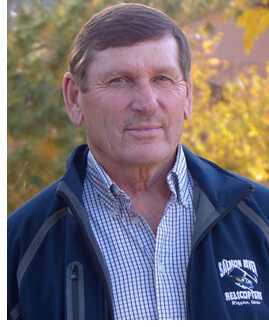 Gary Wiltrout has flown helicopters around the world during a 50-plus year career in aviation. He first flew for the US Army, transporting troops in and out of battle in Vietnam in 1968–69. Afterward, he served as a flight instructor at Fort Rucker, Alabama.
Gary Wiltrout has flown helicopters around the world during a 50-plus year career in aviation. He first flew for the US Army, transporting troops in and out of battle in Vietnam in 1968–69. Afterward, he served as a flight instructor at Fort Rucker, Alabama.
After being honorably discharged from the army in 1971 having flown 2,000 accident-free hours, Wiltrout moved to Alaska and began flying firefighting missions, followed by assisting with the construction of the Trans-Alaska Pipeline System. While living and working in the state, Wiltrout also conducted search-and-rescue missions, aircraft accident investigations, seismographic work, and power-line construction.
In 1999, Wiltrout became chief pilot for Salmon River Helicopters in Riggins, Idaho, where he worked 20 years before recently retiring. During his career with many different companies, he flew more than 26,500 flight hours in helicopters, more than 20,000 of them while conducting longline, external-load missions.
Wiltrout flew multiple models of helicopters during his career: the Bell 47; the Bell UH-1A/B/C/F/H models; the Bell 206A/B models; the Bell 204, 212, and 214B models; the Fairchild Hiller FH-1100; the Aérospatiale Alouette III and Lama; the Hiller Soloy UH12-E; and the Sikorsky S-61 and S-64E/F models.
Wiltrout contributed to a variety of projects worldwide during his distinguished career, including:
- TransAlaska pipeline construction, Alaska, 1971
- Lewiston-grade power-line crossing, Idaho, 1972
- Terror Lake Hydroelectric Project, Alaska, 1984–85
- Cranberry bog sanding, Oregon, the 1980s
- Training New Zealand pilots to log, Malaysia, 1993
- Rocky Mountain National Park rehab project, Colorado, 1993
- New Carissa wreck disaster assistance, Oregon, 1999
- Power-line work, Costa Rica, 2001
- Ferry flights across Brazil, the Amazon rain forest, and the Caribbean to the United States, 2008
- Ferry flights across Asia from Afghanistan to Australia, 2011
- Night-vision googles training and preparation, Port Alberni, BC, Canada, 2012
- Offshore flare-tip replacement projects, Australia, 2013, 2014, 2016.
Whatever the project or mission, Wiltrout is always ready to help, teach, and share his experiences, as is reflected in his personal motto, “We were all new once, so be kind, helpful, and understanding.” He never hesitates to share his techniques and skills with others.
Today, Wiltrout remains a mentor to many, especially new pilots. Many of the pilots he’s coached are operating safely and competently today because of his selflessness. In early 2018, Wiltrout made another generous gesture when he donated a kidney on behalf of a friend’s husband.
Wiltrout has survived three aircraft accidents—including two catastrophic engine failures—and the death of his pilot brother Timothy Wiltrout in 1990. In each case, with his family’s support, he has persevered and continued working in the industry.
Those who have worked with Wiltrout cite his many admirable qualities. “His contributions to this industry are endless, and many who have worked with him will miss his extreme professionalism, positive attitude, integrity, humble spirit, and wealth of helicopter knowledge,” says Cindy Carlson, President, Salmon River Helicopters. “He’s given back to our industry many times over.”
